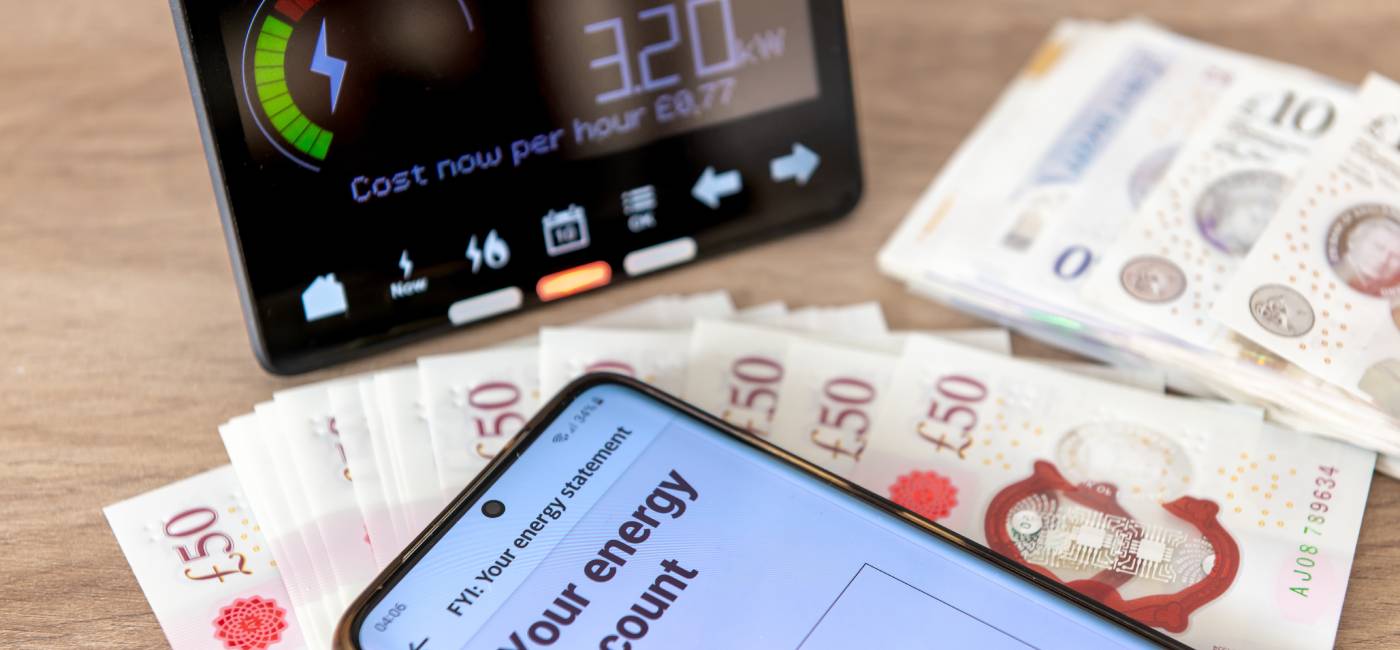
Many people don’t think of themselves as investors. But if you have a pension, then you’re an investor. Whether it’s a workplace scheme or a personal pension, the money inside is likely to be invested in the stock market, as well as assets like bonds and property.
This means when you see in the news how some of the world’s biggest companies are performing, chances are you’re an investor in that business. “Tesla shares down” or “FTSE 100 falls to a 5-year low”… Headlines like these could have an impact on your retirement savings, as we’ll explain.
What’s on this page?
Lisa Picardo, chief business officer UK at PensionBee, says: “Many people don’t realise that by simply having a pension, they’re already investors and their retirement outcomes will depend on the investments in their pension.”
Our list is based on analysis of the shares held by the Universities Superannuation Scheme (USS) and PensionBee’s 4Plus Plan. The USS is the largest private pension scheme in the UK in terms of assets under management, and the main pension scheme for universities and higher education institutions. PensionBee’s 4Plus Plan is the default pension fund for its customers aged 50 and over.
Most money in pension schemes goes into the scheme ‘default’ options, according to Holly Mackay, founder of the investment website Boring Money. These are when your provider chooses the investments for you, for savers that don’t want to make an active decision about where to invest. Although there are a huge range of providers on the market, most will have similar investments.
She explains: “No pension company wants to stray too far from the herd in case they make a bad call. This means they will try to mirror their investments to the world’s largest companies, such as Microsoft, Apple and Nvidia.”
The top 10 companies in most pension schemes include all of the so-called ‘Magnificent Seven’. They are the seven biggest tech-focused companies that have led US stock market returns in recent years –Alphabet, Apple, Amazon, Meta, Microsoft, Nvidia and Tesla.
To give you some insight into the performance of the top 10, we’ve also included the returns that they have delivered to investors over the last five years (that is, the growth in share value as well as any dividend payments). The share prices and five-year returns are based on the time of writing and will go up and down.
1. Microsoft
Founded in 1975, this American tech company pioneered software like Windows, and is now one of the biggest companies in the world. One share costs about $449.26 (around £340). It’s the largest share held by the USS, and third biggest in the PensionBee plan.
Five-year return: 157%
2. Nvidia
Nvidia has quickly become a leader in artificial intelligence (AI) computing, and is now the third biggest company in the world. It makes GPUs (graphics processing units) which are widely used computer hardware used for AI models, cryptocurrency mining and much more. Tech companies such as OpenAI (which runs ChatGPT), Google and many others use Nvidia GPUs to power their AI models.
In January 2025, Nvidia saw the largest ever one-day loss in market capitalization for a U.S. company (nearly $600bn or 17% of its market value). This came in response to the launch of the Chinese AI model DeepSeek, which uses far fewer GPUs.
One Nvidia share currently costs about $123 (about £93). It’s the largest share in the PensionBee plan, and takes the third spot in the USS.
Five-year return: 1,482%
3. Apple
The iPhone maker is the largest company in the world. Like all of the ‘Magnificent Seven’, it’s listed on the Nasdaq, one of the biggest US stock exchanges and one which focuses on technology firms. One share costs $210.79 (about £159). It’s the second-biggest share for both USS and PensionBee.
Five-year return: 179%
4. Taiwan Semiconductor Manufacturing
You might not be familiar with this business, but you will certainly have used its products – semi-conductors or ‘microchips’ used in everyday electronic devices, including smart phones. As the name suggests, it’s a Taiwanese firm, and it currently ranks as the eighth biggest company on the planet. Its share price is $186.98 (about £142).
Five-year return: 301%
5. Alphabet
Yet another American tech giant, Alphabet is the parent company of the search engine Google. The share price has dropped in recent months, in part because more people are using AI for search instead of Google.
Alphabet has two types of publicly traded shares. These are Class A (stock ticker symbol GOOGL), which have voting rights, and Class C (stock ticker symbol GOOG), which don’t. They usually trade at a similar price with A slightly higher.
One Class C share costs $159.58 (about £121).
Five-year return: 133%
6. Amazon
A familiar name to all of us, Amazon is held in most UK pension plans. It’s the world’s biggest e-commerce company and cloud computing provider. Its shares have been under pressure this year since peaking in February, in part because of a slowdown in growth and uncertainty about how US tariffs will affect its third-party marketplace business. But there’s been some recent recovery after the US and China announced a temporary easing of tariffs. One share costs $208.64 (about £158).
Five-year return: 67%
7. Meta Platforms
Meta owns Facebook, Instagram and WhatsApp, so if you use any of these, you’re a Meta customer. You’re probably a shareholder too, courtesy of your pension pot. Like other tech giants, it has been affected by changes in US tariff policy, since it takes a lot of advertising from Asia-based retailers. The shares are expensive, at $639.43 a pop (about £484).
Five-year return: 206%
8. Tesla
The electric car maker ranks as the eighth biggest company in the PensionBee plan, and 29th biggest in the USS. Elon Musk’s company is likely to be among the list of investments in your pension. The shares have had a turbulent time in recent months, in part because of Musk’s work for President Trump’s Department of Government Efficiency.
One small U.S. pension fund, Pennsylvania’s Lehigh County Pension Board, has recently decided to pause new buying in Tesla stock for its actively managed investment fund. This is because of what it said were the risks posed by Musk and the company’s recent worsening financial performance at the company.
Tesla shares rose to a high of $479.86 in December 2024 but at the time of writing, buying one share will set you back $318.38 (about £241).
Five-year return: 490%
9. Visa
Headquartered in California, this card payment organisation is among the 20 biggest companies in the world. It’s the sixth-largest share in the USS. One share costs $355.85 (about £270).
Five-year return: 105%
10. Compass Group
American shares may dominate your pension, but there will be some British businesses in there too. Food service company Compass Group employs more than 500,000 people and is listed on the FTSE 100. One share costs about 2,604p.
Five-year return: 127%

If you’ve got a workplace pension, whether it’s a final salary scheme or a defined contribution plan, some of it is probably invested in the 10 shares mentioned above. It will hold lots more shares too, such as in large UK and European companies and other American firms.
The important difference if you have a defined benefit scheme from your workplace, such as a final salary or career average scheme, is that your pension payment is guaranteed no matter how the investments perform. That doesn’t apply to defined contribution schemes.
If you have a defined contribution scheme then the choice of investments, and how they perform, will have a direct impact on the value of your pension. If you opened a personal pension, you may have actively chosen where to invest. But most people choose a ‘lifestyle’ or ‘passive’ or ‘multi-asset’ option.
These tend to invest in either a global equity fund – a popular choice that means you buy shares in companies from different countries – or a mix of funds from around the world. In any of these scenarios, you’ll likely be investing in those top 10 shares we’ve highlighted. Bear in mind your pension pot will contain other assets too.
For example, only about a third of the USS is invested in shares, while almost a quarter of PensionBee’s 4Plus Plan is in cash-like investments. Holding bonds and cash can help diversify the pension portfolio and smooth out the ups and downs when stock markets become volatile. Many pensions have a ‘lifestyle’ option where your investments are switched from shares to cash and other lower-risk investments as you get closer to retirement.
Most workplace pensions have a website, and sometimes a smartphone app too, where you can log in and look at where your pension is invested. Your money will be held in a fund, or several funds, so you’ll need to click on each one to find out what it invests in.
You can usually see a list of the 10 biggest investments in the fund. If you’re unsure how to log in to your pension account, contact your pension provider.
This information may also be included in the annual statement you receive from your pension provider.
It’s often possible to change what your pension is invested in (unless it’s a defined benefit pension). For example, you may wish to invest in a more ethical way, and pension schemes typically offer at least one ethical or sustainable fund.
Perhaps you’d rather focus on UK companies, or on another part of the world, or invest in a particular sector such as banking, technology or property.
The easiest way to change is usually to log into your pension online or in the app, if it has one. You can then view your options for changing funds and see what’s available that you might prefer to switch to.
It’s important not to make knee-jerk decisions and to carefully think through any decisions to change your pension investments. This is especially important if you are approaching or past retirement age and considering higher-risk investments. Make sure you understand the principles of investing and your attitude to investment risk.
It’s a good idea to discuss any changes with a financial adviser or financial planner.




Learn how to spot an energy scam and keep your money safe.

